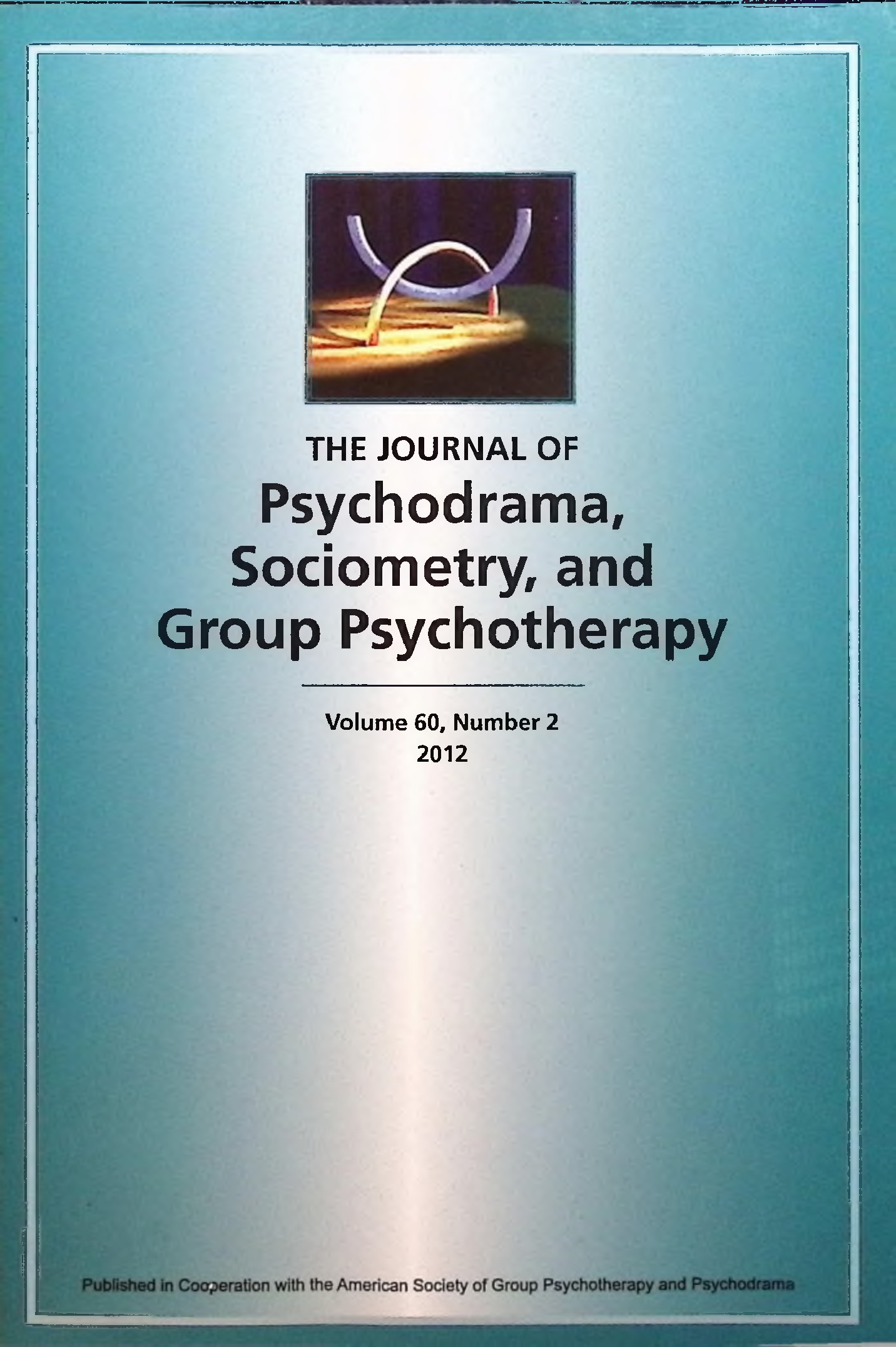The Subjective Genogram: An Action Therapy Tool for Family of Origin Work
Keywords:
role play, dramatic enactment, family-of-origin, genogram, Dramaturgic ModelAbstract
While a person's extended family of origin typically provides numerous role models for expressive behavior, only a limited number of these are incorporated into one's role repertoire. Wiener's (1999) Dramaturgic Model posits two of five theatrical meta-roles needed for adequate psychosocial functioning: the embodying, expressing Performer; and the responsive, self-witnessing Spectator. A case example illustrates the combined use of a "subjective genogram" (an impressionistic visual representation of the client's family of origin) in identifying the client's limited meta-roles and of dramatic role-play in expanding the client's emotional role repertoire.
References
Bronfenbrenner, U., & Newcomb, T. M. (1948). Improvisation: An application in personality diagnosis. Sociatry, J, 367-382.
Emunah, R. (1994). Acting for real: Drama therapy process, technique and performance. New York: Brunner/Mazel.
McGoldrick, M., Gerson, R., & Shellenberger, S. (1999). Genograms: Assessment and intervention (2nd ed.). New York: Norton.
McReynolds, P. & DeVoge, S. (1977). Use of improvisational techniques in assessment In Advances in psychological assessment, Vol. 4. San Francisco: Jossey-Bass.
Wiener, D.J. (1994). Rehearsals for growth: Theater improvisation for psychotherapists. New York: Norton.
Wiener, D.J. (1998). Family assessment using subjective genograms. In T. S. Nelson & T. Trepper (Eds.). 101 more interventions in family therapy. New York: Haworth Press, #83,411-414.
Wiener, D.J. (1999). Assessing interpersonal functioning using theater improvisation. International Journal ofAction Methods, 52, (2), 51-69
Downloads
Published
Issue
Section
License
Copyright (c) 2025 Journal of Psychodrama, Sociometry, and Group Psychotherapy

This work is licensed under a Creative Commons Attribution 4.0 International License.
